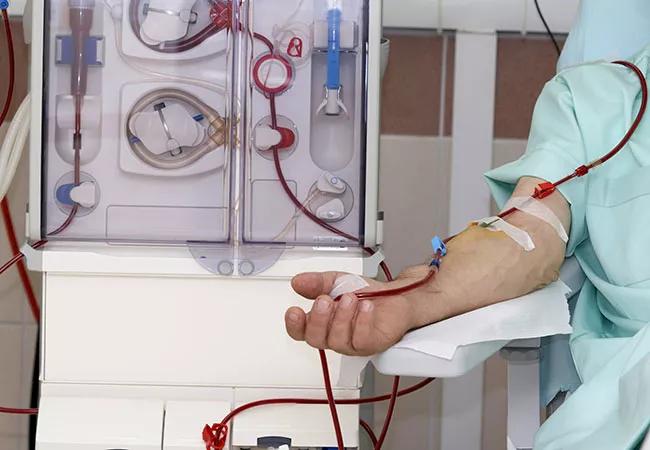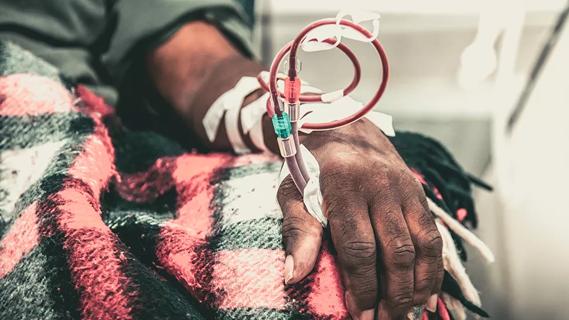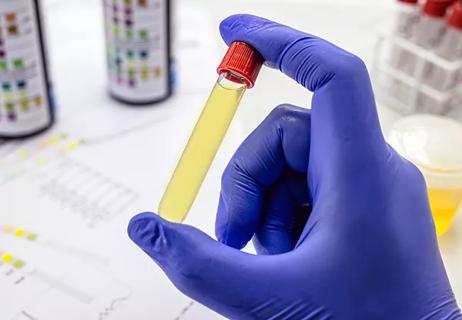Common medical procedures can adversely impact outcomes

For patients with advancing chronic kidney disease (CKD), creating a functioning arteriovenous fistula (AVF) is the preferred method to access the bloodstream for hemodialysis therapy. Yet up to 60% of AVF surgeries are unsuccessful due to the quality of the patient’s veins, in addition to other comorbidities.
Cleveland Clinic is a non-profit academic medical center. Advertising on our site helps support our mission. We do not endorse non-Cleveland Clinic products or services. Policy
“A functioning AVF requires well-preserved arteries and veins, along with good cardiac pump function,” says Tushar Vachharajani, MD, Director of Global Nephrology at Cleveland Clinic. “Vessel preservation is crucial not only for the creation of an AVF, but for its maturation process as well. It is important for providers to take these measures into consideration while treating patients with CKD stages 3B, 4 and 5, who are most likely to need dialysis therapy in the future.”
An AVF is normally constructed using the distal-most vessels, thereby conserving the proximal veins for future use. Use of the forearm cephalic vein, especially near the elbow, for blood draws and parenteral therapy can cause venous injury and phlebitis, leading to loss of a segment generally used for creating an AVF. Midline catheters inserted in peripheral veins increase the risk of venous thrombosis.
“It is crucial that veins in the wrist and elbow be preserved for fistula creation. We recommend using veins on the back of the hand or the forearm for blood draws,” says Dr. Vachharajani.
“In general, most patients prefer a fistula to be created in the nondominant arm. We prefer vessels on one arm to be preserved, so if a patient requires frequent IVs or blood draws, the dominant arm only should be used,” he adds.
Intrathoracic central veins provide reliable access for dialysis, long-term intravenous therapies and cardiac device lead placement. But infection and endothelial injury caused by these medical devices can result in central vein stenosis, which can prevent the creation of an AVF.
“Peripherally inserted central catheter (PICC) lines, central venous catheters and cardiac rhythm devices with transvenous leads are the most common reasons for the development of central vein stenosis in patients with CKD,” says Dr. Vachharajani.
PICC lines are a known source of thrombi and significantly lower the likelihood of achieving a functional AVF.
“It is imperative to recognize that PICC lines damage peripheral and central vessels and make them unsuitable for future dialysis access surgery. Thus, implementing a vessel-preservation strategy should become an integral component of predialysis CKD care,” he says.
“At Cleveland Clinic, obtaining a clearance from the nephrology team is a prerequisite to placing a PICC line in a patient with CKD. If PICC placement is inappropriate, a small-bore tunneled central venous catheter is considered a suitable alternative.”
The high prevalence of cardiovascular disease in patients with CKD makes the need for cardiac implantable electronic devices, cardiac catheterizations and coronary artery bypass grafting (CABG) commonplace in this population. Leads placed in the central veins are responsible for a high incidence of central vein stenosis, which may manifest only when an AVF is placed on the ipsilateral extremity. When indicated, using a leadless pacemaker can avert this problem.
Another serious concern is damage to the radial artery during heart catheterization. The radial artery is the most common artery used for creating a fistula. Complications such as arterial spasm and/or occlusion are not uncommon during a transradial catheterization procedure.
In many institutions, including Cleveland Clinic, the radial artery is preferred as a second bypass graft in patients undergoing CABG.
“Despite the clear advantages of performing cardiac interventions through a transradial approach, any damage to the radial artery, or its removal for CABG, means the loss of a valuable site for hemodialysis access,” says Dr. Vachharajani.
Solutions to problems like these were recently published in Advances in Chronic Kidney Disease.
“The most recent National Kidney Foundation vascular access guidelines emphasize the need for vessel preservation planning as part of an ESKD Life-Plan. An individualized patient-centric approach should be taken with these patients,” says Dr. Vachharajani.
“Cardiologists should be aware of the risks of performing procedures using a transradial approach in CKD patients and include them in the consenting discussion before the procedure is performed,” he says.

Clinicians should individualize dosing practices based on patient risk factors and preferences

Fully-automated process uses preop CT, baseline GFR to estimate post-nephrectomy renal function

Could mean earlier treatment, but also could have negative effects

Identifying barriers in the renal genetic assessment of Black patients

Getting patients to their goal blood pressure

Study highlights benefits of nephrologist-led urine sediment analysis

Using sequencing data to identify novel factors linked to kidney disease with unknown origin

Program plays key role in diagnosis and management of genetic kidney diseases